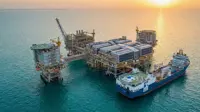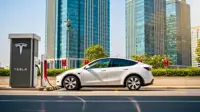India joins protocol to phase out 85% of hydrofluorocarbons by 2045
15 Oct 2016
India has joined the nations of the world in launching the Hydroflurocarbon (HFC) Amendment to the Montreal Protocol, agreeing to substantially phase out a potent greenhouse gas by 2045 and help avert a potential 0.5 degree C rise in global temperature by 2050.
One hundred and seven countries meeting in Kigali, Rwanda, today agreed to substantially phase out a potent greenhouse gas by 2045 and move to prevent a potential 0.5 C rise in global temperature by 2050.
The 28th Meeting of Parties at Kigali, Rwanda reaffirmed the global intent to mitigate climate change and reaffirmed international co-operation in this regard. The Kigali Amendment to the Montreal Protocol is legally binding and will come into force from 1 January 2019.
Hydrofluorocarbons, a family of gases that are largely used in refrigerants in home and car airconditioners, substantially worsen global warming.
HFCs are a family of gases that are largely used in refrigerants in home and car air conditioners. They, however, substantially worsen global warming.
Late on Friday, India, China, the United States and Europe agreed on a timeline to reduce the use of HFC by 85 per cent by 2045.
The details of the agreement are yet to be made public and India's environment ministry is yet to detail India's road map for achieving this goal.
India hasn't committed to a fixed date by which it will start reducing its HFC consumption but has agreed to do so after the developed countries would have reduced their consumption by 70 per cent, of what they did in 2011-13.
The developed countries, led by the US and Europe, according to a CSE statement, will reduce the HFC use by 85 per cent by 2036 over a 2011-13 baseline.
China, which is the largest producer of HFC in the world, will reduce its use by 80 per cent by 2045 over the 2020-22 baseline and India will reduce the use of HFC by 85 per cent over the 2024-26 baseline.
Baselines refer to the average consumption in a period from which future reductions are calculated. The developed countries have also agreed to provide enhanced funding support to the developing countries.
Earlier this week, India announced domestic action on HFC-23 (trifluoro-methane), a super greenhouse gas with a GWP of 14,800, which is produced as a byproduct of HCFC-22 (chloro-difluoro- methane). Currently, HCFC-22 is the most commonly used refrigerant in India.
India has mandated five manufacturers - who fully control the domestic market - to capture and incinerate HFC-23 so that it is not released into the atmosphere. This action will eliminate release of HFC-23 equivalent to about 100 million tonnes of Carbon dioxide emissions over the next 15 years.
Chandra Bhushan, deputy director general, Centre for Science and Environment (CSE), a public interest research and advocacy organisation based in New Delhi, said, ''India's proposal would avoid HFC emissions equivalent to 70 billion tonne of carbon dioxide.''
''The agreement upholds the principle of common but differentiated responsibilities and respective capabilities (CBDR & RC). It recognizes the development imperatives of high-growth economies like India, and provides a realistic and viable roadmap for the implementation of a phase-out schedule for high global warming potential (GWP) HFCs.
Speaking on the occasion, minister of state (independent charge) environment, forest and climate change, Anil Madhav Dave, said, ''We were flexible, accommodative and ambitious. The world is one family and as a responsible member of the global family, we played our part to support and nurture this agreement''.
India is happy to have played a positive, constructive and collaborative role towards reaching this agreement. Right from the outset, India demonstrated exemplary flexibility and an open mind to work with all nations. This enabled a fair and equitable, yet ambitious Agreement that is in the best interest of our people, in the best interest of all developing nations, and in the best interest of the world.






















